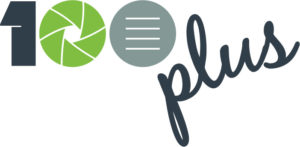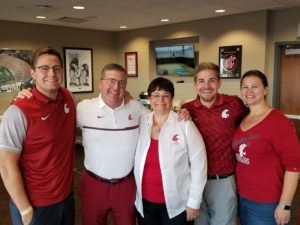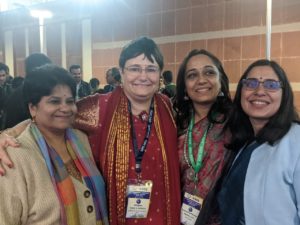She is an electrical engineering professor, Washington State University’s First Lady and a parent to an engineer and a computer scientist.
A self-described connector who relishes building bridges between groups, she mentors engineers to cultivate three networks: “where you want to go, where you are, and where you have been,” and to “give back and help the next generation of you.”
When not exploring the Evergreen State with her corgi Cayenne, she’s leading a research project to develop a microgrid to power a village in rural India and addressing the opportunity gap for women in STEM.
Meet Dr. Noel Schulz.

Q: The engineering leaders we talk to usually point to a moment of inspiration or a fork in the road of life that led them to pursue an engineering degree and profession. What was yours?
I can point to two opportunities growing up that I think inspired me to go into engineering. In the 3rd grade, I toured a manufacturing facility with my family as part of an open house at my dad’s work. I was amazed at the machines and processes of turning raw materials into final products. Also, when I was in middle school, my dad was working on building a Heath Kit TV with many different parts. I helped him work on it and even had resistor earrings I soldered.

Dr. Noel Schulz (center) with her family, son Andrew, husband Kirk, son Tim and daughter-in-law Tricia. Photo credit: Dr. Noel Schulz.
Q: How have you been able to use your platform as both an electrical engineering professor and First Lady of Washington State University to champion engineering and encourage engineers?
One of my passions in my career has been working to increase the number of women and underrepresented minorities in engineering careers. Additionally, I developed networks and systems to help women faculty and staff in the areas of recruitment, retention, and advancement. I feel my role is as a connector to help build bridges between groups that are working to overcome challenges in these areas. I attend events across our WSU colleges, programs and campuses and learn about challenges and opportunities, and I work to connect the individual or group with the idea or challenge with the right university resources or person to help move towards a solution. I also provide suggestions and support of ideas others have. One example of that is our WSU Alumni Association Women’s Leadership Summit. This started during a discussion in the President’s Box at a WSU football game, and, working with our Alumni Association staff and women volunteers, we had an amazing panel. I have also spoken with women students in STEM across multiple campuses and programs about my journey and some of my challenges with imposter syndrome, dealing with failure, and networking. I love getting our WSU alumnae back on campus to interact with our faculty, staff, and students.
I also think it is important for women engineers to have role models and to see that you can be an engineer and have a family. Often, high schoolers opt out of engineering because they are not sure about balancing professional and personal activities. In my classes, I discuss my family, and in presentations, I show a picture of my family to demonstrate that women engineers can build families too.
As WSU First Lady, parts of my responsibilities relate to activities and interactions with WSU faculty, staff, students, alumni, and friends across all six of our campuses and beyond. I have some responsibilities as First Lady where I can leverage my activities in EE. I am the WSU representative for the Washington STEM Board, where I get to work with representatives all over the state to discuss advancing Pre-K to 12 education to increase the STEM pipeline. Through the board and the WA STEM regional networks, I share opportunities for school districts across the state to participate in WSU programming and activities, especially over the last year with our virtual events. Also, through alumni and corporate events, I meet people in many professions, and I can discuss my research as well as activities in electrical engineering and engineering.
Q: Speaking of influencing others to pursue engineering, you have first-hand experience with this at home. Your father, Charles “Butch” Nunnally, was also an electrical engineer, and your sons Tim and Andrew pursued computer science and engineering. What’s the secret to the Nunnally engineering legacy?
I think universities provide an amazing opportunity to share about careers. It helped me get interested in engineering and helped us get our two sons into engineering and computer science as well. As the daughter of an engineering faculty member, I would go into Dad’s office and join him in teaching laboratories and see his interactions with the students and hear about different technical challenges that interested me. My mom was an elementary school teacher, so I was interested in education too.
Our sons have a mother who is an electrical engineer professor and father who is a chemical engineer professor and university administrator. They attended university student organization meetings, visited research and teaching labs, attended conferences and university laboratory open houses growing up. Additionally, Kirk and I both worked with our sons’ Cub Scout packs and Boy Scout troops to provide opportunities for all the scouts to learn about STEM fields, including doing electricity and chemistry merit badges.
Another key item is to have them connect with friends to learn about engineering careers. Your children will listen to others about career opportunities better than you as parents. Tim interviewed a CS (computer science) faculty member in high school about CS careers, and while in middle school, Andrew interacted with an industrial engineering faculty member at an open house who shared opportunities in mechanical engineering/industrial engineering. Providing opportunities to learn about different STEM career fields through interactions and hands-on activities helps them find their passion and interests.
Q: You share a wide range of things on Twitter (work, family, interests) and you have a great sense of humor. Why is it important or useful for an engineering leader to be accessible and transparent in this way?
When I started sharing on Twitter 12 years ago, it was a way to communicate with the university community about activities happening around a campus. Twitter has evolved over time, but it continues to be a great way to communicate with many audiences and share many great things that WSU is doing with our faculty, staff, students, alumni, and friends. It is interesting that community folks learn more about what faculty do from my tweets and faculty and staff in turn, learn more about what we, as President and First Lady, do with community, alumni, and friends for the university.
As a leader, I think it is important for people to see you as a person. Leaders have successes and failures, good days and bad days, and strengths and areas for improvement. I also think it is important for us to lead where we are. You don’t need a title to make a difference. Engineers haven’t always been known as the best communicators and it’s time we change that. It is also okay to laugh at yourself sometimes.
Additionally, as a leader, you need to work to recognize the folks in your organization who make things happen and are not always out in the spotlight. It is important to recognize all the university team members for their contributions and Twitter is a great platform to say thanks, celebrate people’s accomplishments and progress, and support the university community.
As a woman in STEM, I want others to see that you can integrate family and career. It does take work, but you can have both and have fun. There are challenges and we will solve those problems together by being a team. WSU has a strong family atmosphere and I think my tweeting helps people feel more comfortable talking to the First Lady or engineering professor.

Schulz with women power faculty colleagues from across India at 2019 IEEE 8th International Conference of Power Systems, Jaipur, India. Photo credit: Dr. Noel Schulz.
Q: What is the most innovative, stop-you-in-your-tracks research you’ve seen a WSU student do in the EE space?
It is hard to narrow down one project. Right now, we are working on a U.S./India project that is working to develop advanced electric distribution systems that include renewable energy, such as wind or solar, storage, and electric vehicles and work towards improving reliability, resiliency, flexibility and sustainability. One of the cool outcomes of the project is we are helping our India partners develop a microgrid to provide electricity to a village in India. Additionally, one of the senior design teams I worked with developed a solar microgrid for rural electrification. I am inspired by the idea of helping people access reliable energy that helps advance their lives.
Q: What else would you like us to know?
If I could give only one piece of advice, it would be to have three networks – where you want to go, where you are, and where you have been. For mentors, remember to look at your peer networks for peers with different skill sets. Also remember to give back and help the next generation of you. Be proactive to create the networks, especially peer networks if they don’t exist. I have started networks for women faculty in engineering at three universities, women power faculty across international universities, and spouses of university presidents in the Big 12 and Pac 12 over my career and I have always gained more from the interactions than the effort to pull them together. It was time well invested in myself and others!
– Tia Over, The Engineering 100
